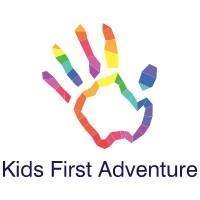Programs & Curriculums
Below you will find some examples listed in bullet points of our day to day activities at KFALanguages/Communications
- Making associations between words and colors in books.
- Learning words in sign language.
- Responding to and imitating sounds and rhymes through songs.
- Identifying facial expressions and sounds.
Math/Science
- Investigating whether objects sink or float at the water table.
- Using simple math skills, like counting and measuring.
- Understanding how plants grow by planting grass seeds and caring for them until they sprout.
- Learning basic shapes, like circles and squares, by going on a scavenger hunt in the classroom for objects that look like these shapes.
Social/Emotional Development
- Playing cooperatively with other children by painting murals as a class and sharing blocks to build a house.
- Pretending to have a picnic with classmates in the Dramatic Play center.
- Discussing ways they can help their family at home through songs.
- Discussing and celebrating accomplishments and learning about independence from books.
Critical Thinking
- Feeding themselves with forks and spoons and learning to pour child-size pitchers during family-style meals.
- Working on coordination by throwing and kicking balls and conquering obstacle courses on the playground.
- Learning rhythm through dancing and musical activities.
- Learning to do basic daily skills.
Before / Aftercare
(School Age)
- For school age students mornings and afternoons at KFA are busy with engaging activities in our coroperative, interactive and social classrooms.
- Meals are provided for both programs
- Homework Assistance
-
Long-term projects are developed with students, around issues important to them and their community.
These activities promote:
- Critical thinking and problem-solving
- Connecting with the community
- Giving back and making a difference
Regular Care (Infants,Toddlers & Preschool)
- Understanding object permanence (that objects exist even when they can’t be sensed) through educational games.
- Creating sensory memories by exploring different textures and sounds with toys.
- Understanding similarities and likenesses by sorting colored or shaped objects and solving puzzles.
- Making associations between words and colors in books.
- Learning words in sign language.
- Responding to and imitating sounds and rhymes through songs.
- Identifying facial expressions and sounds.
- Playing near and developing familiarity with other infants and teachers.
- Learning self-awareness through songs.
- Displaying social gestures through interactive materials.

